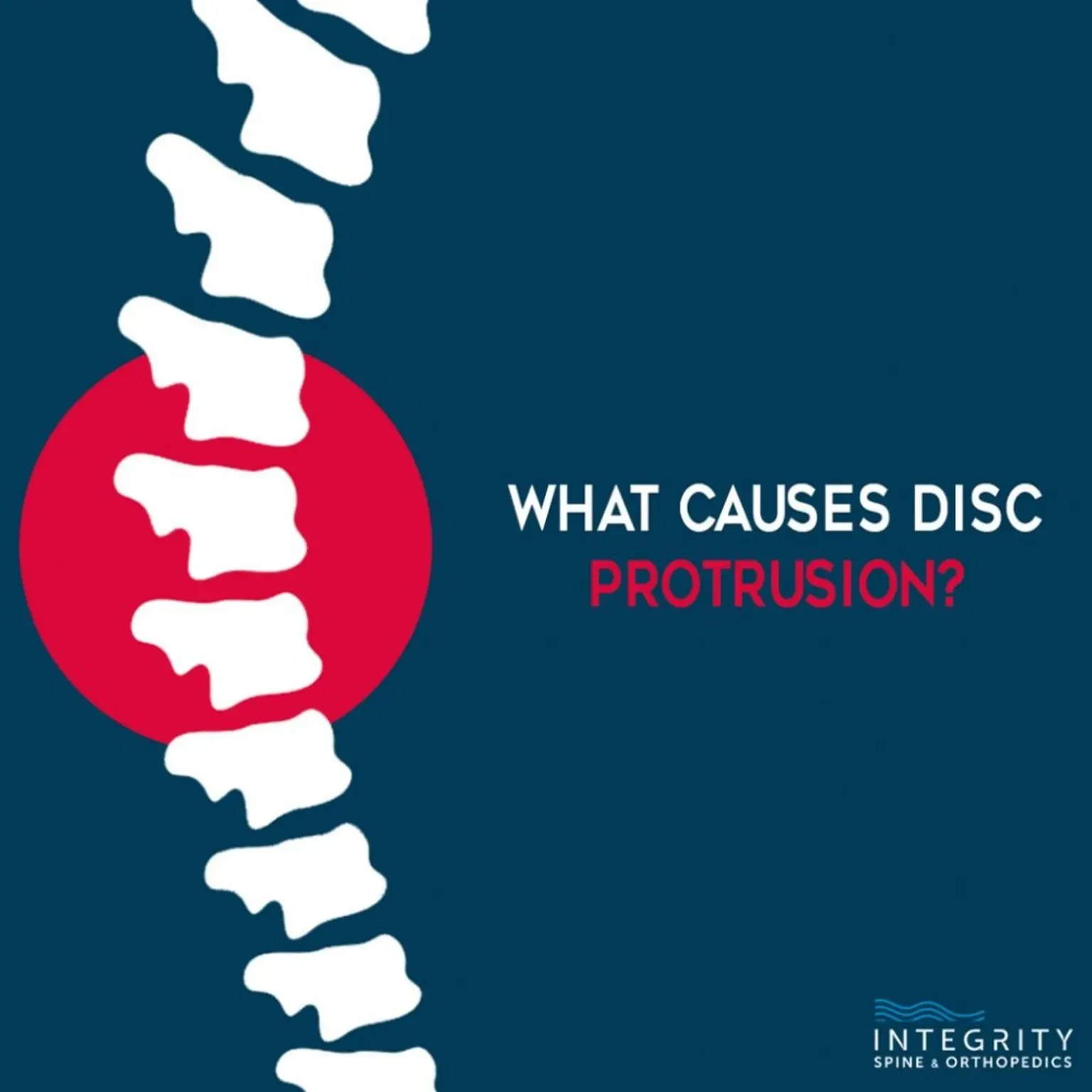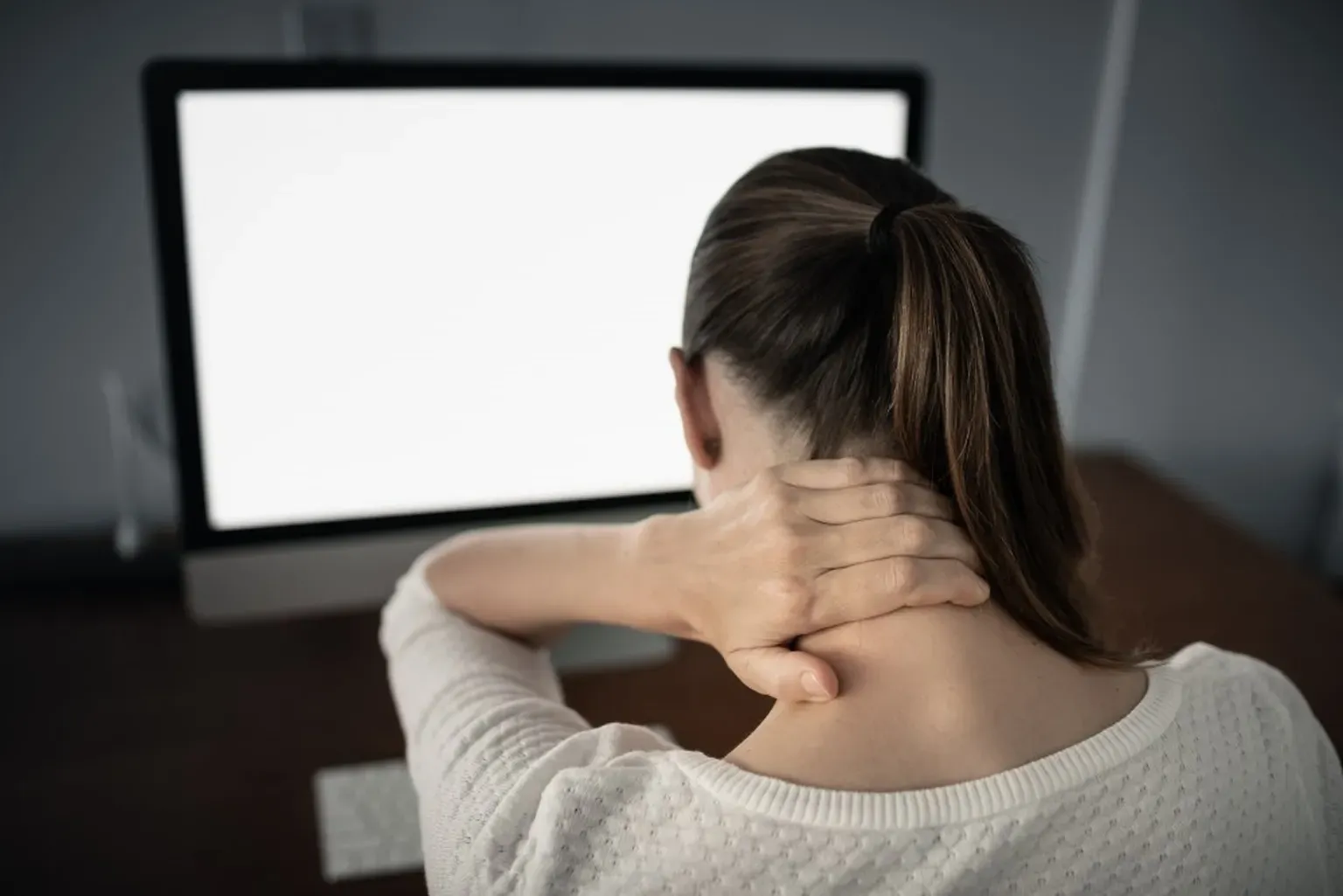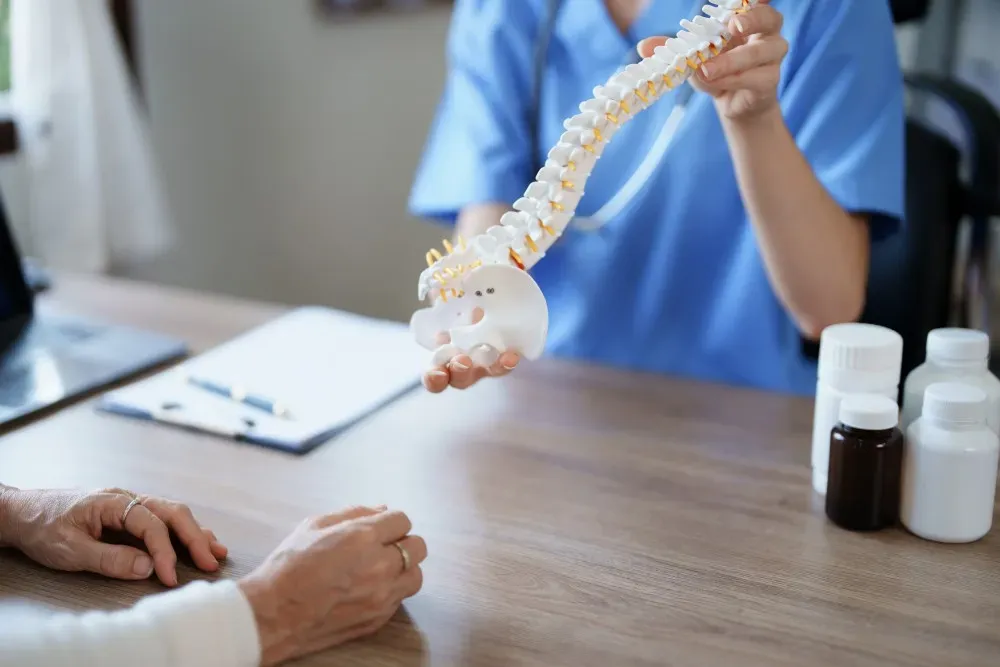Neurosurgery & Orthopedic Surgeons in Jacksonville

What Causes Disc Protrusion?
Disc protrusion (also called a bulging disc) is a common back injury that affects intervertebral discs in the spinal column. Intervertebral discs separate vertebrae and provide cushioning, support, movement, and shock absorption in the spine.
Disc protrusion (also called a bulging disc) is a common back injury that affects intervertebral discs in the spinal column. Intervertebral discs separate vertebrae and provide cushioning, support, movement, and shock absorption in the spine. They’re made up of a tough outer ring enclosing a soft, jelly-like nucleus.
In a healthy disc, the nucleus material is centered. When the nucleus presses against the outer ring, the spinal disc begins to bulge into the spine — the bulge can occur around part or all of the circumference of the disc.
Some cases of disc protrusion aren’t even noticeable and result in no pain or symptoms, while other cases cause back or neck pain. If the bulging disc irritates or presses against a nerve in the spinal canal, symptoms like radiating pain, weakness, and numbness can develop.
A bulging disc can progress to a herniated disc, which occurs when the nucleus material breaks through the outer ring and spreads into the spinal canal.
Keep reading to learn more about what causes bulging discs and how to treat them.
WHAT CAUSES DISC PROTRUSION?
A bulging disc is a common back injury that can occur from several causes. The majority of bulging discs stem from one or more of the following factors.
- Wear and tear. The most common cause of disc protrusion is wear and tear over time. As we age, spinal discs become drier, less flexible, compressed, and more prone to tears and injuries. The supportive ligaments begin to loosen and weaken, causing the disc to bulge outward as the nucleus material presses against the outer ring. Once spinal discs start degenerating, even a small movement like bending over, twisting, sneezing or lifting an object can lead to disc protrusion.
- Repetitive movements. Performing repetitive lifting, twisting or bending movements — especially if you work in a physically demanding job like construction or carpentry — causes discs to wear out over time. As the tough outer ring weakens and becomes less able to absorb shock, the nucleus material presses against the outer ring.
- Traumatic injury. Sometimes, a single injury places too much stress and pressure on the disc and causes it to weaken and bulge. These types of injuries can include using your back muscles to lift a really heavy object, lifting and twisting at the same time, a bad fall, or a high-impact car accident.
Risk factors for developing a bulging disc include age, obesity, smoking, a physically demanding occupation, a sedentary lifestyle, poor posture, and genetics.
TREATMENT OPTIONS
In many cases, non-surgical treatments are successful in managing pain and symptoms from a bulging disc. A protruding disc may require several weeks or months to heal completely, but early treatment can prevent the disc from rupturing in the future.
Conservative treatment options include:
- Rest. Try to avoid activities that put stress on the spine or aggravate back pain. That’s not to say you should take to complete bed rest — staying in bed can lead to increased pain, stiffness and weakness. Stay active while modifying activities that place a lot of pressure on your back.
- Anti-inflammatory medications. Over-the-counter NSAIDs can help relieve mild back and leg pain. If over-the-counter medication isn’t enough, your doctor might prescribe stronger anti-inflammatories or a cortisone injection.
- Physical therapy. Physical therapy can help you strengthen the core, low back and leg muscles that support the spine. Improving your strength and flexibility will help prevent future injuries.
While it’s rare for a bulging disc to require surgery, some do. If your condition requires spine surgery, talk to your doctor to see if you qualify for a minimally invasive approach.
You can help prevent spinal disc injuries by maintaining a healthy weight, getting regular exercise, quitting smoking, and practicing good posture and body positioning.
FIND SPINE CARE AND TREATMENT AT INTEGRITY SPINE AND ORTHOPEDICS
Integrity Spine and Orthopedics offers top-notch spine and orthopedic care for acute and chronic conditions. We have the orthopedic care, pain management, sports medicine, and minimally invasive surgery services to help you to get back on your feet and back to doing the activities you love.




